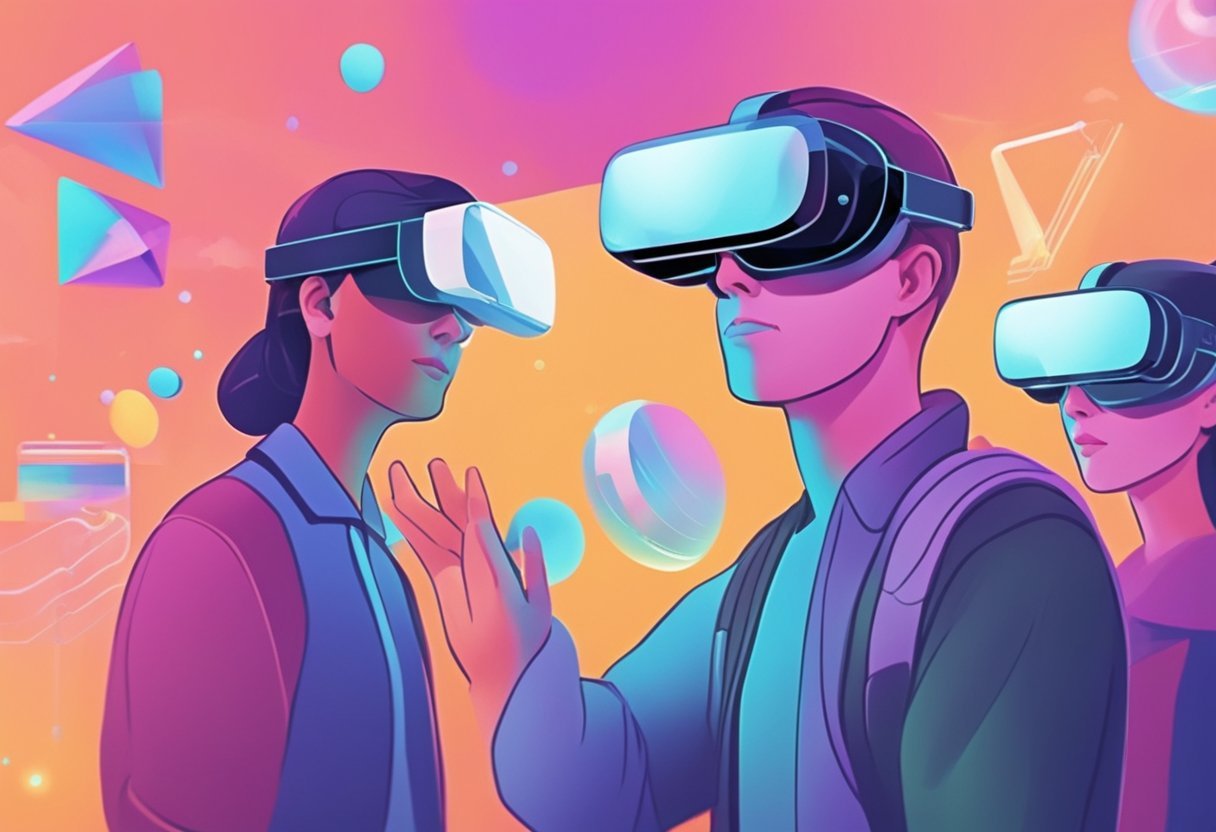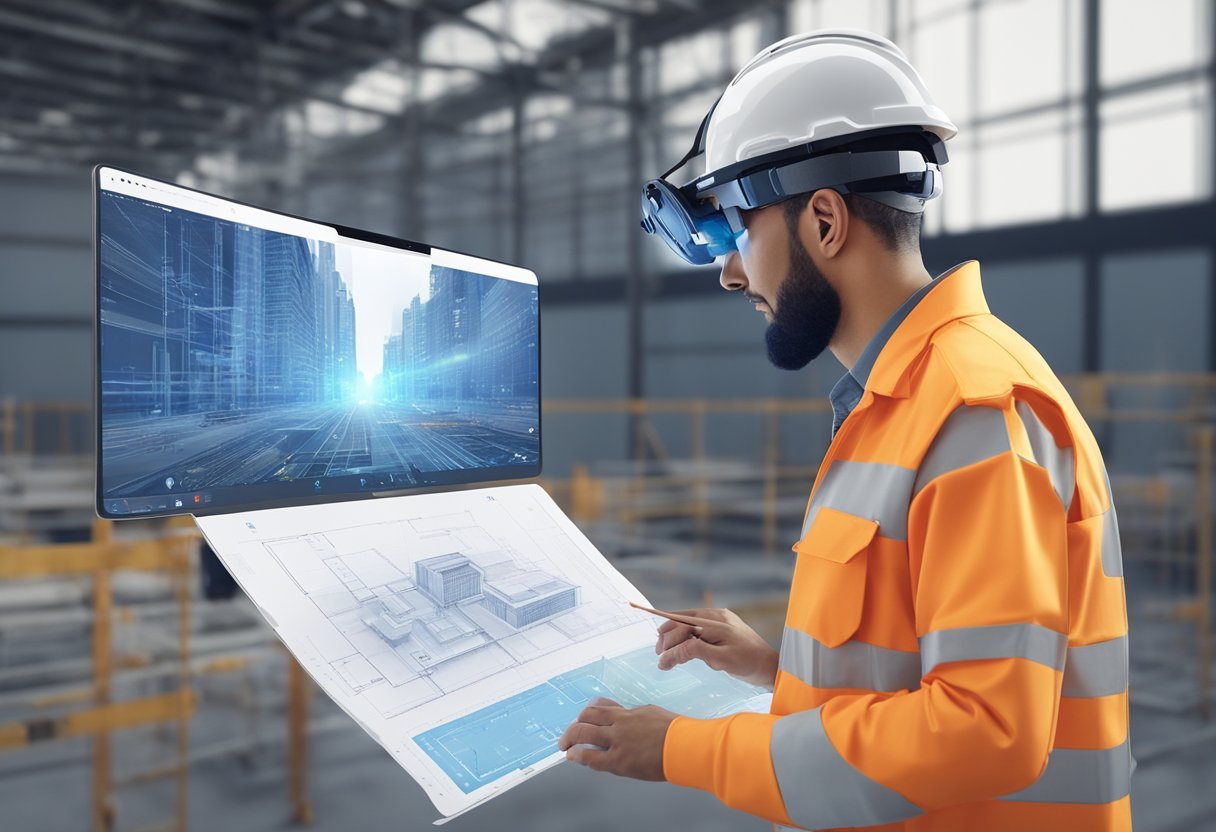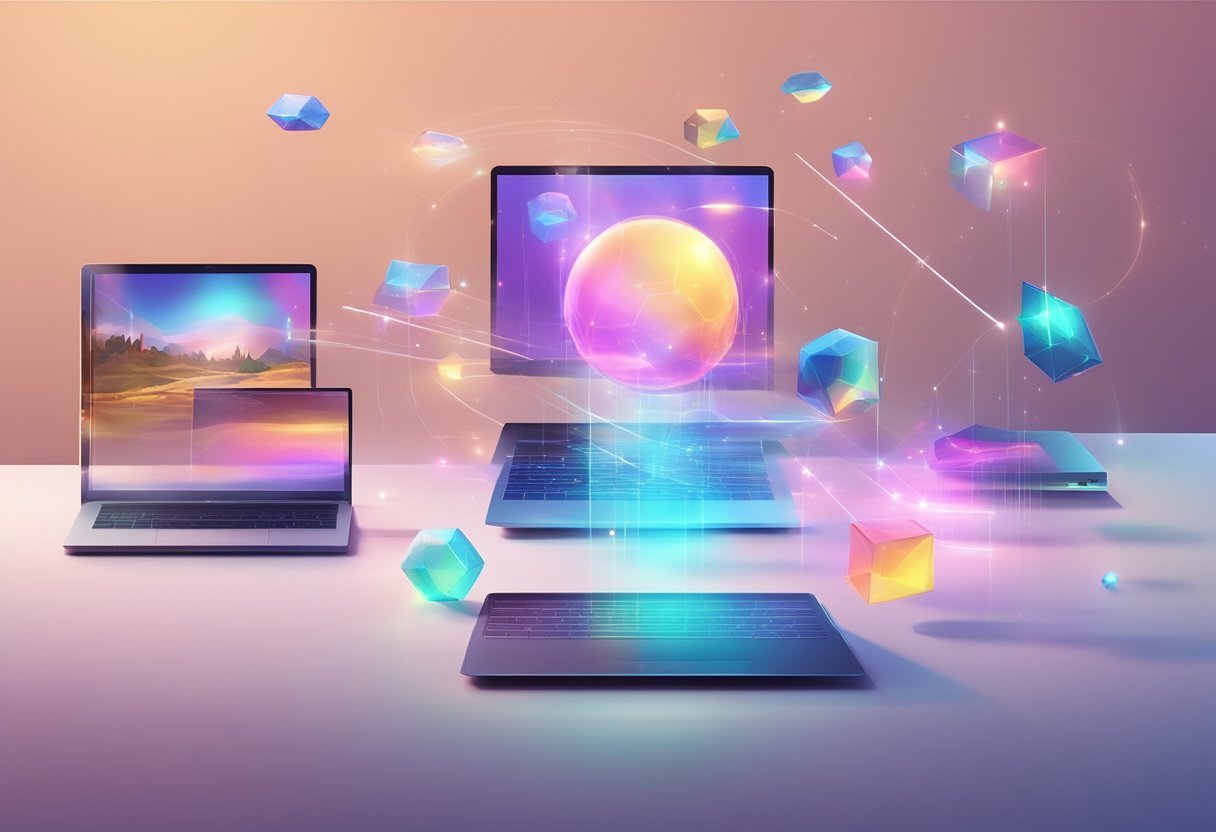Augmented reality (AR) is a technology that has been around for decades but has only recently gained significant attention. It is a technology that enhances the real world by overlaying digital information, such as images, videos, and animations, onto the real world. AR has the potential to transform the way people interact with the world around them, and it has already begun to impact various industries, including education, healthcare, and entertainment. In this blog post, we will explore the impact of augmented reality and how AR will change the future of technology.
The historical evolution of AR is an interesting story that dates back to the 1960s. However, it wasn’t until the 1990s that the term “augmented reality” was coined. Since then, AR has come a long way, and the technology has advanced significantly. Today, AR is being used in various applications, from training simulators to video games. As the technology continues to evolve, it is expected to have an even greater impact on society in the years to come.
Key Takeaways
- Augmented reality is a technology that overlays digital information onto the real world, enhancing the user’s experience.
- AR has been around for decades, but it wasn’t until the 1990s that the term “augmented reality” was coined.
- AR has the potential to transform various industries, including education, healthcare, and entertainment.
Historical Evolution of AR
Augmented Reality (AR) has a rich history that dates back to the 1960s. The first head-mounted display system was developed by Ivan Sutherland in 1968, which paved the way for the development of AR technology. However, the term “augmented reality” was not coined until 1990 by Boeing researcher Tim Caudell.
Early Innovations
In the early 1990s, Louis Rosenberg developed the Virtual Fixtures AR system at the USAF Armstrong’s Research Lab. This system was designed to compensate for the lack of high-speed 3D graphics processing power in the early 90s. Julie Martin, a dancer and choreographer, used AR technology to create the “Dancing in Cyberspace” performance in 1994, which was one of the earliest examples of AR being used in the arts.
Mainstream Breakthroughs
In recent years, AR has become more mainstream with the introduction of AR applications such as Pokemon Go and IKEA Place. The ARToolkit, an open-source software library for building AR applications, was released in 1999 and has been widely used in the development of AR applications. In 2016, Microsoft released the HoloLens, a mixed reality headset that allows users to interact with holograms in the real world.
The historical evolution of AR has been marked by a series of innovations and breakthroughs that have paved the way for the development of AR technology. With the continued development of AR applications and devices, the future of AR looks bright.
Impact of Augmented Reality
Augmented Reality (AR) is a technology that superimposes digital information on top of the real world, allowing users to interact with both the real and virtual world. AR has the potential to revolutionize the way we live, work, and learn. Here are five ways AR is impacting society:
Enhancing Learning Experience
AR technology can be used to create immersive and interactive learning experiences. By overlaying digital information on top of the real world, students can explore complex concepts in a more engaging and interactive way. AR can also be used to bring historical events to life, allowing students to experience them in a more realistic and memorable way.
Improving Healthcare
AR technology is being used in healthcare to improve patient outcomes and reduce medical errors. AR can be used to create 3D models of organs and other body parts, allowing doctors to visualize and plan surgeries more accurately. AR can also be used to train medical professionals, allowing them to practice procedures in a safe and controlled environment.
Enhancing Marketing and Advertising
AR technology is being used in marketing and advertising to create interactive and engaging campaigns. AR allows companies to create immersive experiences that allow users to interact with products in a more meaningful way. AR can also be used to create virtual try-on experiences, allowing customers to see how products will look on them before making a purchase.
Improving Manufacturing and Maintenance
AR technology is being used in manufacturing and maintenance to improve efficiency and reduce errors. AR can be used to create digital work instructions that guide workers through complex procedures. AR can also be used to create virtual overlays that show workers where to place components, reducing errors and improving quality.
Enhancing Entertainment
AR technology is being used in entertainment to create immersive and interactive experiences. AR can be used to create virtual characters that interact with the real world, allowing users to experience stories in a more engaging and interactive way. AR can also be used to create virtual environments that allow users to explore and interact with digital content in a more immersive way.
Technical Foundations of AR

Augmented Reality (AR) technology is a system that superimposes computer-generated information onto the real world. This technology has been around for several decades, and it has become increasingly popular in recent years. AR is made possible by a combination of hardware and software components that work together to create a seamless experience for the user. In this section, we will explore the technical foundations of AR, including the hardware components and software capabilities that make it possible.
Hardware Components
AR systems require a variety of hardware components to function properly. One of the most important components is the head-mounted display (HMD), which is worn on the head and displays computer-generated content to the user. HMDs can come in many forms, including goggles, eyeglasses, and heads-up displays. Some of the most popular HMDs include the Microsoft HoloLens, Google Glass, and Magic Leap One.
Another important hardware component of AR systems is the field of view (FOV). The FOV refers to the area that the user can see through the HMD. A larger FOV allows for a more immersive experience, while a smaller FOV can be limiting. Some HMDs use holographic optical elements or diffractive waveguides to increase the FOV and provide a more realistic experience.
Software Capabilities
In addition to hardware components, AR systems also require specialized software capabilities to function properly. One of the most important software capabilities is object recognition, which allows the system to identify and track objects in the real world. This is essential for creating a seamless experience for the user, as the system must be able to accurately superimpose computer-generated content onto the real world.
Another important software capability of AR systems is interactivity. AR systems can be designed to allow users to interact with the computer-generated content in a variety of ways, including touch, gesture, and voice commands. This allows for a more immersive and engaging experience for the user.
The technical foundations of AR are complex and require a combination of hardware and software components to function properly. As AR technology continues to evolve, we can expect to see even more advanced hardware and software capabilities that will further enhance the user experience.
AR in Education and Training
Augmented Reality (AR) is a technology that overlays digital information onto the physical world. AR has been gaining traction in the field of education as it provides learners with an immersive and interactive learning experience. AR is a cognitive tool that can enhance the learning process by providing the learners with virtual objects that can be manipulated in real-time.
Enhancing the Learning Process
AR can be used to create a learning environment that is both engaging and interactive. By using AR, learners can visualize abstract concepts and understand complex ideas. NASA has been using AR to train astronauts to work in space. AR can simulate the experience of working in zero-gravity conditions and helps astronauts prepare for their missions.
AR can also be used to enhance the learning effectiveness of traditional classroom teaching. By using AR, teachers can create interactive lessons that are both fun and informative. AR can provide learners with a hands-on experience that can help them retain information better.
Practical Applications in Training
AR has practical applications in the field of education and training. AR can be used to train learners in a safe and controlled environment. For example, AR can be used to train medical students to perform surgeries. AR can simulate the experience of performing a surgery and provide learners with feedback on their performance.
AR can also be used to train learners in the field of engineering. AR can simulate the experience of working with complex machinery and help learners understand how the machinery works.
AR has enormous potential in the field of education and training. AR can enhance the learning process and provide learners with an immersive and interactive learning experience. AR can be used to create a learning environment that is both engaging and informative. AR can also be used to train learners in a safe and controlled environment.
AR in Social Interaction and Entertainment
Augmented reality (AR) has been found to have a significant impact on social interaction and entertainment. AR technology allows for the creation of virtual environments that can enhance social experiences and make them more engaging. In this section, we will explore the impact of AR on social interaction and entertainment, with a focus on gaming and leisure, as well as social dynamics and communication.
Gaming and Leisure
AR has revolutionized the gaming industry by adding a new dimension to gameplay. With AR, gamers can enjoy a more immersive experience that combines the real world with virtual elements. AR games are becoming increasingly popular, with titles such as Pokemon Go and Ingress attracting millions of players worldwide. AR games are not only entertaining but also provide a platform for social interaction and collaboration, allowing players to work together to achieve common goals.
AR has also been used in leisure activities such as tourism, where it can enhance the experience of visiting a new place. With AR, tourists can explore new destinations in a more interactive and engaging way, with virtual guides providing information and entertainment.
Social Dynamics and Communication
AR has the potential to transform social dynamics and communication by providing new ways of interacting with others. AR can enhance social situations by providing virtual cues that can be used to facilitate communication and social interaction. For example, AR can be used to provide social cues such as eye contact or gestures that can help to establish rapport and build relationships.
AR can also be used to create virtual environments that simulate real-world social situations, allowing users to practice social skills and build confidence. This can be particularly useful for individuals who struggle with social anxiety or other social difficulties.
AR has the potential to revolutionize social interaction and entertainment by providing new ways of engaging with others and creating immersive virtual environments. AR is already being used in gaming and leisure activities, and its potential applications in social dynamics and communication are vast. As AR technology continues to evolve, it is likely that we will see even more innovative applications of this exciting technology.
Challenges and Considerations in AR

User Experience Limitations
Augmented Reality (AR) is a technology that adds digital information to the physical world, creating a mixed reality experience. However, AR faces several user experience limitations that must be considered. One of the main limitations is the physical world itself. AR relies on the physical environment to function, which means that any changes in the environment can affect the AR experience. This can lead to inconsistencies in the AR experience that can be frustrating for users.
Another limitation is the satisfaction of users. AR experiences must be engaging and immersive to keep users interested. If the AR experience is not engaging, users may quickly lose interest and move on to other activities. This is especially important when designing AR experiences for children, as their attention span is shorter than adults. Therefore, AR designers must create experiences that are both engaging and age-appropriate.
Ethical and Privacy Concerns
AR technology has the potential to revolutionize many industries, including architecture, engineering, tourism, and e-commerce. However, it also raises ethical and privacy concerns. One of the main concerns is the use of wearable tech, which can collect sensitive personal information such as location data and biometric data. This information can be used for targeted advertising or even identity theft, which can lead to serious consequences.
Another concern is the impact of AR on confidence and anxiety. AR experiences can be overwhelming for some users, leading to anxiety and a lack of confidence in using the technology. This can be especially true for older users who may not be as familiar with technology. Therefore, AR designers must consider the impact of their designs on users’ confidence and anxiety levels.
AR technology has the potential to revolutionize many industries, but it also faces several challenges and considerations. AR designers must consider the limitations of the physical world and ensure that AR experiences are engaging and age-appropriate. Ethical and privacy concerns must be addressed to ensure that users’ personal information is protected.
Frequently Asked Questions
How is augmented reality enhancing consumer experiences in marketing?
Augmented reality technology has revolutionized the way businesses interact with their customers. By using AR, companies can create interactive and immersive experiences for their customers, which helps in building brand loyalty. For example, AR can be used to create virtual try-ons for clothing and makeup, which allows customers to see how a product would look on them before making a purchase. This technology also allows businesses to create virtual showrooms and product demonstrations, which can be accessed from anywhere in the world.
In what ways has augmented reality improved learning and education for students?
Augmented reality has the potential to transform the way students learn by creating interactive and engaging experiences. AR can be used to create virtual field trips, which allows students to explore different parts of the world without leaving their classroom. It can also be used to create interactive textbooks, which allows students to interact with content in a way that is not possible with traditional textbooks. AR can be used to create simulations and models, which allows students to visualize complex concepts in a more tangible way.
What are the significant changes in business operations due to augmented reality technology?
Augmented reality technology has brought significant changes to the way businesses operate. AR can be used to create virtual training programs, which allows employees to learn new skills in a more engaging and interactive way. It can also be used to create virtual product demonstrations, which allows businesses to showcase their products in a more immersive way. AR can be used to create virtual showrooms and product catalogs, which can be accessed from anywhere in the world.
How is augmented reality influencing social interactions and community engagement?
Augmented reality is changing the way people interact with each other and their communities. AR can be used to create virtual meetups and events, which allows people to connect and engage with each other in a more immersive way. It can also be used to create virtual art installations and exhibits, which allows people to experience art in a more interactive way. AR can be used to create virtual tours and experiences, which allows people to explore different parts of the world without leaving their homes.
What are the primary concerns associated with the widespread use of augmented reality?
As with any new technology, there are concerns associated with the widespread use of augmented reality. One of the primary concerns is privacy. AR can be used to collect data on users, which can be used for targeted advertising and other purposes. There are concerns about the impact of AR on physical and mental health. Extended use of AR can cause eye strain and other health issues.
Can you describe the overall effect of augmented reality on global industries and economies?
Augmented reality has the potential to have a significant impact on global industries and economies. AR can be used to create new products and services, which can lead to job creation and economic growth. AR can be used to improve productivity and efficiency in a variety of industries, which can lead to cost savings and increased profits. Overall, the widespread adoption of AR has the potential to drive innovation and growth in a variety of industries.




